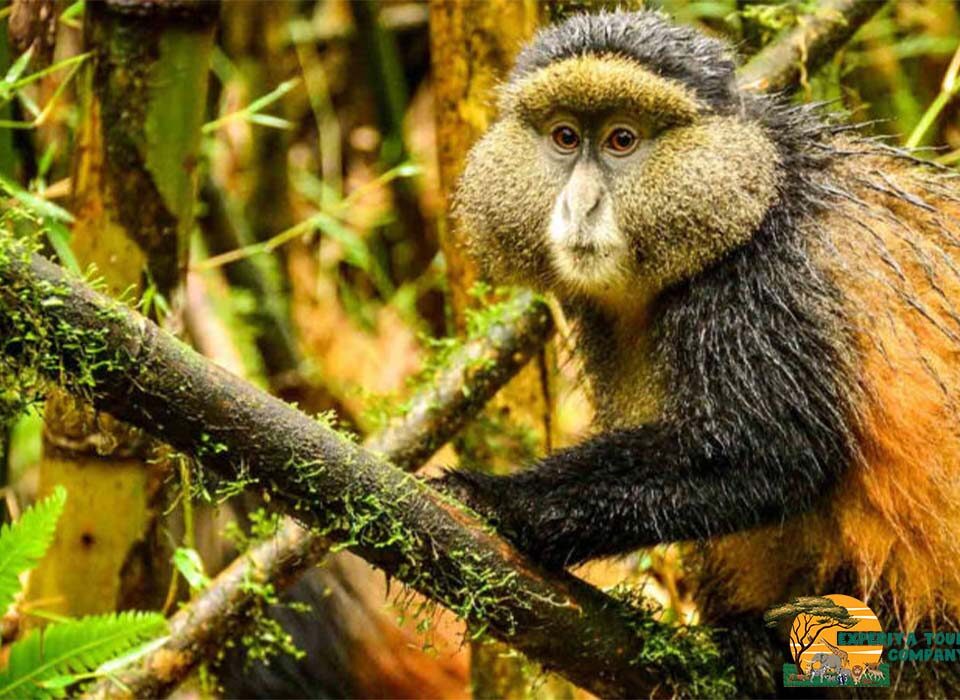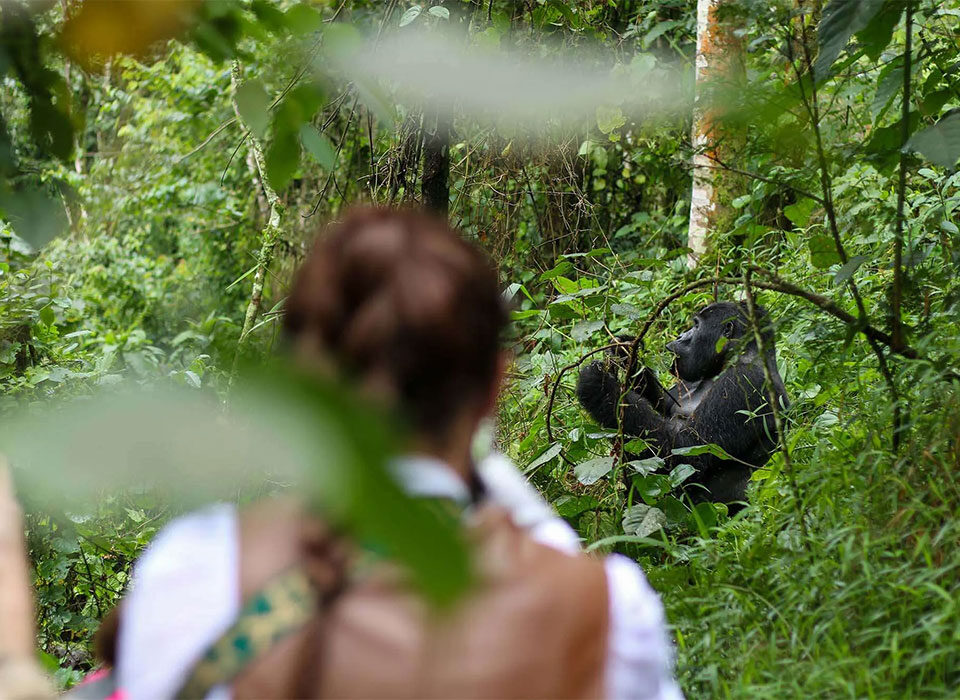
Crater Lakes Near Fort Portal – Discover Uganda’s Hidden Natural Wonders with Experiya Tour Company
October 25, 2025
Can I Hike to the Snow-Capped Peaks of Rwenzori? – Explore Uganda’s Mountains of the Moon with Experiya Tour Company
October 25, 2025What’s Special About the Rwenzori Mountains – Explore Uganda’s Mountains of the Moon with Experiya Tour Company

What’s Special About the Rwenzori Mountains?
Rising majestically along the western border of Uganda, the Rwenzori Mountains are a breathtaking natural wonder — a place where clouds kiss glacier-covered peaks, where mist drifts through ancient forests, and where every trail reveals a world untouched by time. Often called the “Mountains of the Moon,” the Rwenzoris are among Africa’s most captivating mountain ranges, combining spectacular beauty, biodiversity, and adventure in a way found nowhere else on the continent.
To the traveler’s eye, the Rwenzori Mountains are far more than just a geographical landmark. They are a living masterpiece of nature — wild, mysterious, and deeply spiritual. Whether you’re an avid hiker, a nature photographer, or simply someone who loves scenic landscapes, the Rwenzoris offer an unforgettable experience that blends challenge, serenity, and wonder.
So, what’s special about the Rwenzori Mountains? Let’s journey through their geography, wildlife, culture, and secrets to discover why this UNESCO World Heritage Site is one of Africa’s most extraordinary destinations.
The Geography of the Rwenzori Mountains
The Rwenzori Mountains lie along the border between Uganda and the Democratic Republic of Congo, forming part of the Albertine Rift Valley — one of the most ecologically rich regions on Earth. The range stretches for about 120 kilometers, with peaks reaching over 5,000 meters (16,400 feet) above sea level.
The highest peak, Mount Stanley, rises to 5,109 meters, making it the third-highest mountain in Africa, after Kilimanjaro and Mount Kenya. Unlike those iconic peaks, which are volcanic, the Rwenzoris are block mountains — formed by uplift and faulting rather than volcanic activity. This gives them a distinct geological structure with deep valleys, steep ridges, and rugged cliffs that make every hike a visual spectacle.
What truly sets the Rwenzori Mountains apart is their permanent snow and glaciers, which exist just kilometers from the equator. These icy summits, often shrouded in mist, have fascinated explorers and scientists for centuries. The mountains’ name, “Rwenzori,” means “Rainmaker” in the local language, a fitting description for a range that captures moisture from the Congo Basin and feeds some of Africa’s great rivers, including the Nile.
The Rwenzoris: The Legendary “Mountains of the Moon”
The Rwenzoris have been known for centuries as the “Mountains of the Moon,” a name that dates back to ancient times. Greek geographer Claudius Ptolemy first mentioned them in the second century AD, describing a great snow-capped mountain range that gave rise to the Nile River. For hundreds of years, the legend persisted, though few had ever seen them.
It wasn’t until the late 19th century that European explorers confirmed their existence. In 1889, Henry Morton Stanley became the first outsider to report the Rwenzoris’ snowcapped peaks, calling them “a vast wonderland of mountains rising higher than the clouds.” Today, visitors who hike these same slopes often describe a similar feeling — one of stepping into a mystical realm suspended between earth and sky.
A UNESCO World Heritage Site
In 1994, the Rwenzori Mountains National Park was declared a UNESCO World Heritage Site, recognized for both its natural beauty and its ecological significance. The park covers an area of approximately 996 square kilometers, encompassing glaciers, waterfalls, lakes, and forests.
The UNESCO designation highlights not only the park’s scenic splendor but also its exceptional biodiversity. The Rwenzori Mountains host a unique mix of ecosystems — from tropical rainforest and bamboo forests to alpine meadows and glacial zones — each supporting its own community of plants and animals found nowhere else in the world.

Unique Vegetation Zones – A Living Vertical Garden
One of the most fascinating aspects of the Rwenzori Mountains is their striking vegetation zones, which change dramatically as you ascend in altitude. The journey from the foothills to the peaks is like walking from the equator to the Arctic — all in just a few days.
- Montane Forest (1,800–2,500 meters): The lower slopes are covered in dense rainforest teeming with life — towering mahogany trees, lianas, and a chorus of birds. This is the realm of chimpanzees, blue monkeys, and countless butterflies.
- Bamboo Zone (2,500–3,000 meters): A band of thick bamboo forest provides shade and serenity. This zone often echoes with the rustling of monkeys and the call of turacos.
- Heather Zone (3,000–4,000 meters): As you climb higher, the forest gives way to giant heathers draped in moss, creating a fairytale-like landscape. Strange, otherworldly plants such as giant lobelias and senecios dominate this zone, giving it a prehistoric feel.
- Alpine Zone (4,000–4,500 meters): Vegetation becomes sparse, with mosses, lichens, and everlasting flowers surviving the cold. The air grows thinner, and views of glaciers and peaks begin to appear.
- Glacial Zone (Above 4,500 meters): This is the realm of snow and ice — a surreal sight so close to the equator. The glaciers sparkle under the sunlight, forming the source of several streams that feed the Nile.
These distinct vegetation belts create a visual symphony of color and texture, making the Rwenzoris a paradise for photographers and nature enthusiasts alike.
Rich Biodiversity and Wildlife
The Rwenzori Mountains are part of the Albertine Rift, one of the most biodiverse regions on the planet. The park supports more than 70 mammal species and over 200 bird species, many of which are endemic to this region.
Wildlife you might encounter includes:
- Forest elephants
- Rwenzori red duikers
- L’Hoest’s monkeys
- Black-and-white colobus monkeys
- Chimpanzees (in lower forests)
The birdlife is especially remarkable, with rare species such as the Rwenzori turaco, golden-winged sunbird, and scarlet-tufted malachite sunbird. The melodies of these birds echo through the valleys, creating a soundtrack to the mountain’s natural beauty.
The Rwenzori region is also home to an astonishing diversity of plant life. Botanists often describe it as one of the world’s most remarkable alpine ecosystems, featuring flora adapted to cold, wet, and oxygen-poor environments. The giant groundsels, which can grow up to six meters tall, and the enormous lobelias, with their waxy leaves and water-storing cores, look like plants from another planet.
Hiking and Trekking Adventures
For adventure seekers, the Rwenzori Mountains are a bucket-list destination. The park offers several trekking routes, ranging from short hikes to multi-day expeditions that lead to the high peaks.
The most famous trek is the Central Circuit Trail, a seven- to nine-day journey that loops through the park’s major valleys and leads climbers to Margherita Peak, the highest point on Mount Stanley. Along the way, trekkers cross glaciers, rivers, and alpine meadows, camping at designated huts each night.
Another popular route is the Kilembe Trail, which starts near the town of Kasese. It’s known for its stunning views of the Nyamwamba Valley and its well-maintained paths.
Unlike Mount Kilimanjaro, which is often crowded, the Rwenzoris remain wonderfully unspoiled. On many days, hikers have the trails entirely to themselves, surrounded only by mist, mountain silence, and the rhythmic sound of boots on wet soil.
Reaching Margherita Peak is a true achievement, requiring endurance and acclimatization. But even those who trek only partway are rewarded with spectacular scenery — waterfalls, crater lakes, and endless layers of mountains fading into the horizon.
Best Time to Visit:
The best months for trekking are December to February and June to August, when the weather is relatively dry and trails are more accessible. However, the Rwenzoris’ weather can change rapidly, with frequent rain and fog, so good preparation and guides are essential.
Cultural Heritage of the Rwenzori Region
The slopes of the Rwenzori Mountains are home to the Bakonzo people, who have lived here for centuries. They regard the mountains as sacred, believing the peaks to be the home of their ancestral gods. Visitors can learn about local traditions, music, and dance through cultural tours organized in nearby villages such as Ruboni and Bulemba.
Interacting with the Bakonzo adds a human dimension to the Rwenzori experience — their warmth, stories, and respect for nature enrich every journey.
Why the Rwenzori Mountains Are So Special
Several features make the Rwenzoris one of Africa’s most extraordinary destinations:
- Unmatched Diversity: From rainforest to glaciers, the range packs nearly every type of ecosystem found on Earth.
- Mystical Beauty: Constant mist, moss-covered trees, and glacial peaks give the mountains a dreamlike, almost mythical quality.
- Unique Flora and Fauna: Many species here are found nowhere else, making it a living museum of evolution.
- Off-the-Beaten-Path Adventure: Unlike more commercialized mountain destinations, the Rwenzoris offer solitude and authenticity.
- Cultural Significance: The mountains are woven into the identity and spirituality of the Bakonzo people.
In essence, the Rwenzori Mountains are not just a destination — they are an experience that touches both body and soul.
Visit the Rwenzori Mountains with Experiya Tour Company
Exploring the Rwenzori Mountains is a journey through Uganda’s most dramatic landscapes — an adventure that combines challenge, wonder, and discovery. From the tropical foothills to the icy peaks, every step tells a story of nature’s power and beauty.
To experience the Rwenzoris safely and fully, travel with Experiya Tour Company, one of Uganda’s leading adventure and nature tour specialists. Experiya organizes customized Rwenzori trekking and photography expeditions, complete with professional mountain guides, porters, equipment, and accommodation. Their expert planning ensures you can focus on the beauty around you, not the logistics.
Whether you dream of summiting Margherita Peak, hiking through the forested valleys, or simply soaking in the majestic views, Experiya Tour Company will craft the perfect itinerary to match your fitness level, time, and interests.
With Experiya, you don’t just climb a mountain — you experience one of Africa’s most magical places.



